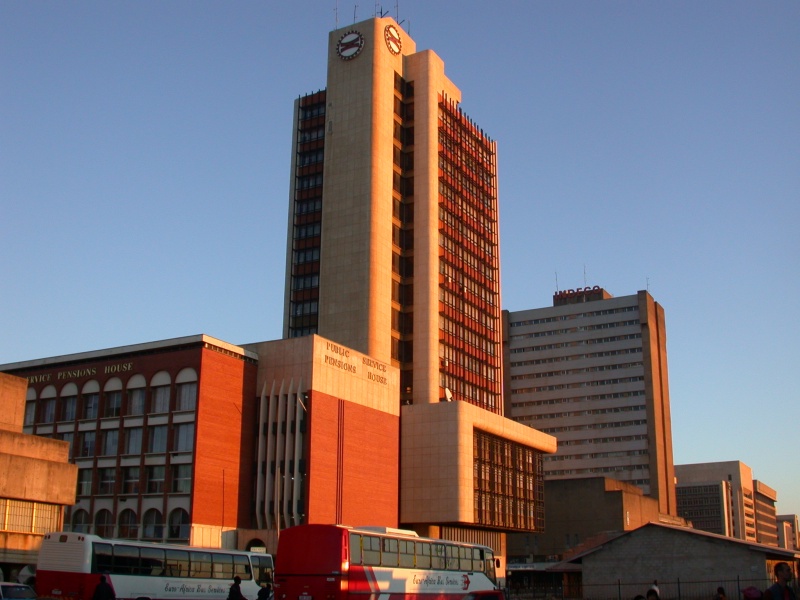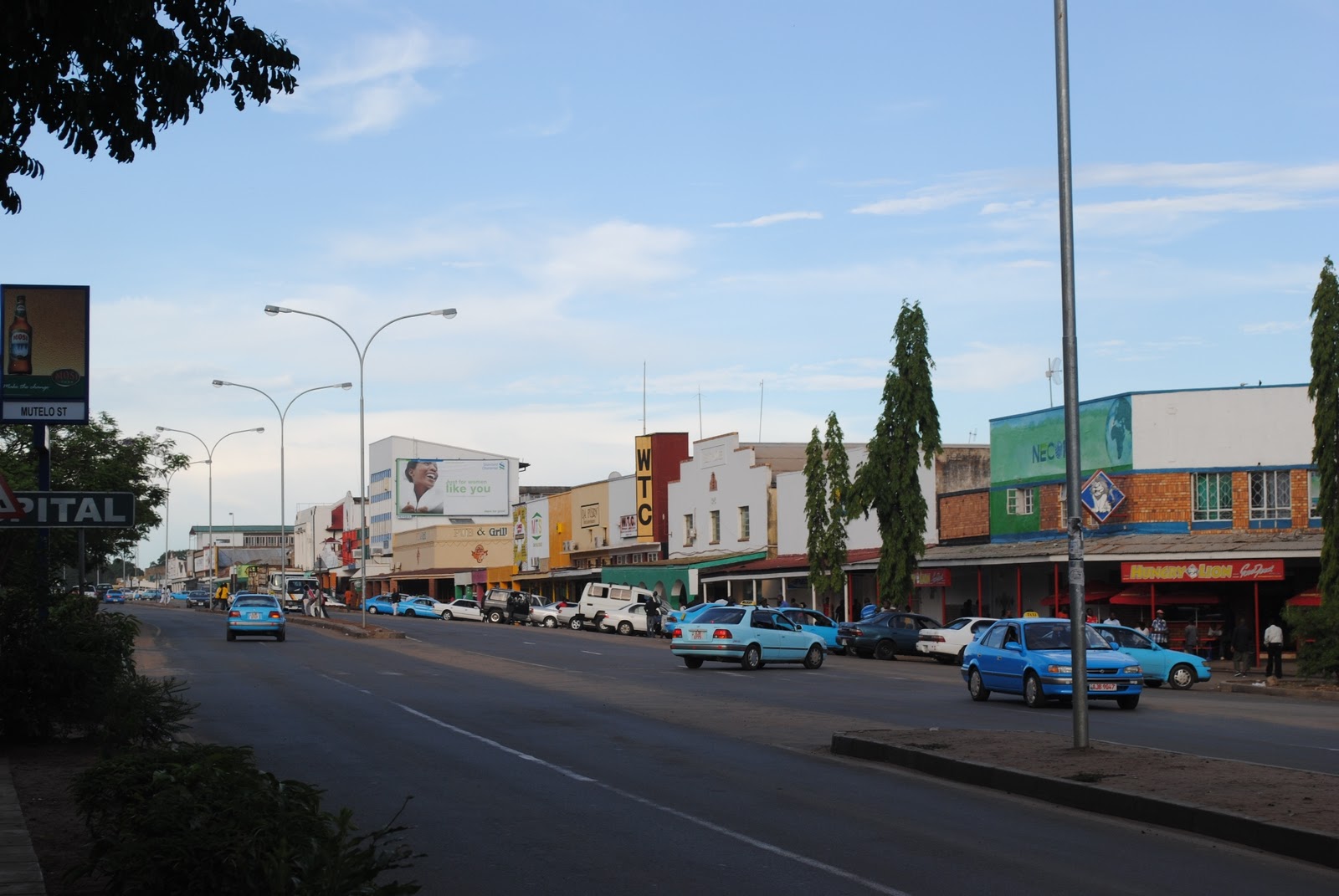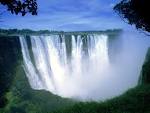

Area: 752.6 thousand square meters. km
Population: 11.7 million.
Capital: Lusaka
Major cities: Kitwe-Nkana, Ndola
The highest point in the mountains Muchinga (2148 m)
Official language: English
The dominant religion is Christianity, indigenous beliefs
Currency: tkvyacha
Zambia - land-locked state, in
south-central Africa. It shares borders with the Democratic Republic of
the Congo to the north, Tanzania to the north-east, Malawi to the east,
Mozambique, Zimbabwe, Botswana and Namibia to the south, Angola in the
west.
The capital and largest city of Zambia - Lusaka.
Climate in Zambia
The climate is
sub-equatorial, with three seasons: rainy and warm (November - April),
dry and cool (May - July), hot and dry (August - October).
The difference in the average temperature of the warmest and coldest
month low - from 27 in October to 15 in July (in Lusaka). The average
annual rainfall varies from 700 mm in the south to 1500 mm in the north.
Cyclical droughts cause great damage to agriculture. In September -
October, the country becomes one color - gray, green almost disappears,
the trees look parched and lifeless. But as soon as the first starting
in November rains, the landscape is changing, forests and savannas are
green, the rivers overflow their banks. Then, when the water goes down,
well-moistened valleys become lush pastures. The best time to visit the
country - from August to October or during the cool and dry months from
May to August.
Traditions of Zambia
Zimbabwe, where the most common patrilineal system. Most numerous people in the country - Bemba, as well as its related paw, Ambo, Lamb, kaonde, according to the matrilineal system of kinship determine its origin in descending maternal and men belong to the clan of the mother. All these nations are united in maternal clans, each of which has its own totem name. Among the Bemba of totemic clans are over forty. "Clan believes that comes from a certain female ancestor, which is more or less a legend and who lived in the time of the first settlement of currently occupied territory." Belonging to the clan of the mother determines a Bemba origin of man, his status in the community and the right to be the leader, if it belongs to a higher clan. Maternal clans do not have the common property and do not make the common ritual ceremonies. U.Uaytli believes that "the hallmark of a clan in the Bemba is the name and the legend of the origin associated with a female ancestor, or, in some cases, with her brother." Once married, male Bemba moved to the village of his wife and build there own house. However, during the first few years of marriage, a young family is closely connected with the family of his wife, a young female Bemba first years of marriage does not have a fireplace and is a common cooking hearth. Born to a married couple, children belong to the clan of his wife and obey her brother. Over time, however, having got several sons, a husband can get the right to move with them to their home village. In case of divorce, which is not uncommon among the Bemba in the first years of marriage, children also remain in the clan materi.Sredi Bemba common polygyny, which has its own characteristics. The second and subsequent marriage have virilokalny character, unlike the first - matrilocal. Wife, following the first, live separately, sometimes even in another country, and do not belong to the clan of his first wife. However, in modern Zambia poliginiyny marriage is becoming less common among ordinary peasants. At the same time, local leaders can still sometimes have a few dozen women, which is partly a testament to their moguschestva.Sredi matrilineal peoples of Zambia stand out Lund. The right to inherit property, they also go through the maternal line, and passes from the mother's brother to another brother or mother's brother to sister's son. However, married women-Lunda not stay in the village of his mother and her husband are moving to the countryside. Thus, the core of the village consists of Lunda male relatives on the maternal side of mothers, sisters and daughters of sisters scattered throughout the villages of their husbands in a large territory. This feature of the marriage system in Lunda identity defined in the education of children. Giving their women married to another village, matriliniya like trusts her upbringing of their offspring, and in return receives a different breed matrilinii. Boy at an early age growing up in close contact with the relatives of his father, and when he grows up and joins the clan of the mother's brother, becomes a sort of "double" set of close relatives.
Attractions in Zambia
Livingston

Livingston - 300 km. in the south-west of Lusaka - one of the oldest European cities and the starting point for a trip to the Victoria Falls. It also is the first bridge in the country (1904). Railway Museum, which is located a few hundred meters to the west of Livingston Station - a collection of old engines and rolling stock, open every morning from hitting the rail. To many this place reminds rusty pile of scrap metal, but there are specimens of railway equipment, which are hardly even where in the world you can find, so it is quite popular among tourists. National Museum of the City a few more attractive and is the collection of archaeological and anthropological artifacts. The main exhibit - a copy of the Neanderthal skull, estimated age - more than 100 thousand years. There are also examples of ritual artefacts and handicrafts Tonga, mock African villages, a collection of things of the famous traveler and explorer David Livingstone in Africa and the exposure of African maps relating to 1690
Victoria Falls

Local residents call the waters of the Zambezi, hits 1700-meter front with a 110-meter height in the valley, the width of which is only 50 meters far from the Liviigstona, near the border with Zambia, Zimbabwe, "thundering smoke." Water there, in fact, is not visible. See only the clouds of foam, some of which show a rainbow. With a deafening roar into the deep falls of up to 500 thousand cubic meters of water per minute. 70 km2 area around this wonder of nature are protected by the Nature Conservation Act, so here freely live animals and plants. In 1989, UNESCO made waterfall in the World Heritage List.
Cities in Zambia
Lusaka
 Lusaka -
Zambia's new capital of an independent, relatively young and rapidly
growing city. On old maps you can read this title - the Federation of
Rhodesia and Nyasaland. It was a large area under the protection of
Britain. Not the capital, but the administrative center of Northern
Rhodesia was then the city Livingston, located on the southern
outskirts.
Lusaka -
Zambia's new capital of an independent, relatively young and rapidly
growing city. On old maps you can read this title - the Federation of
Rhodesia and Nyasaland. It was a large area under the protection of
Britain. Not the capital, but the administrative center of Northern
Rhodesia was then the city Livingston, located on the southern
outskirts.
Back in the early XX century Lusaka - a small village, the entire
population of which was occupied mainly in agricultural work, in 1931,
becomes the city and the administrative center of the British Northern
Rhodesia instead of Livingston. Location of the village exceptionally
well. Lusaka, located in the central part of the country, at an altitude
of 1300 meters above sea level, in an area with favorable warm climate.
When, in 1964, the British protectorate of Northern Rhodesia became the
independent state of Zambia, Lusaka gets the status of the capital.
However, at that time, the newly-born "Capital", there were only a
little more than one hundred thousand inhabitants. But this is Africa,
where new cities appear and flourish, as if by magic!
Zambia's economy experienced a period of unprecedented progress then.
Copper prices - the main natural heritage of the country - held on the
world market at a high level. This, by the way (copper - a source of
wealth) was reflected in the modern image of the city: basement of a
building lined sheet copper. Overall rosy picture of economic
development should be reflected in the development of the capital city.
In 1975, Lusaka became the main city in Central Province, one of the
most developed in the country economically. Lusaka was designed as a
typical European city to host the colonial administration. Strictly
differentiated downtown and residential neighborhoods. For the African
population of the capital employed in the industry and in the home,
under the supervision of the administration built suburbs - Kabvata,
Chilendzhe, matter. Initial planned building is a brick structure,
resembling round African huts. But the inhabitants of the surrounding
villages and the city of Manila attracts like a magnet. For the
inhabitants of the African hinterland Lusaka was and remains a brilliant
capital, full of endless possibilities - especially the possibility of
finding a well-paid job. As a result, the city is literally overgrown
unplanned suburbs.
Lusaka today - the largest populated city of Zambia. It is home to more
than two million people. Moreover, more than sixty percent of its
residents, alas, do not have the work, which he dreamed in his village,
so small-scale trade. Beggars is surprisingly little. Although petty
theft occur, and handbag tourists waving, yawning on the sides, you
should not! Most metropolitan residents still prefer to make a living by
honest labor. Part of the population is employed in the food and textile
industries, require a lot of manpower engineering plants, steel, the
chemical promyshlennosti.Lusaka - a cosmopolitan city, a cosmopolitan
city. It peacefully get representatives of many African tribes - mostly
people Bantu language group, as well as a number of people from
different European countries. Africans follow usually their traditional
beliefs of the Christian population of the capital Catholics
predominate, as well as Protestants. The official language is English.
Lusaka - not only the economic center of the country, but also, no less,
cultural and political. Here in the capital, there are important
political developments in Zambia - a presidential election, the election
of members of parliament, in 1991, was held on a new constitution. In
the capital, for the majority of schools in the country: the University
of Zambia Institute for African Studies, a number of colleges -
pedagogical, technical, agricultural. In Lusaka, the headquarters of the
National Research Council and the public involved in the protection of
wild animals and the nature of the country. There are, of course, cinema
and even a theater - on stage to successfully perform amateur groups.